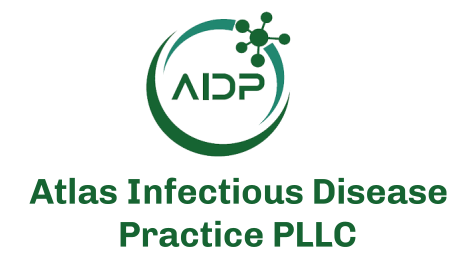Disclaimer: Early release articles are not considered as final versions. Any changes will be reflected in the online version in the month the article is officially released.
Author affiliation: The University of Texas at Austin, Austin, Texas, USA (K. Bi, S.R. Bandekar, L. Ancel Meyers); The University of Texas at El Paso, El Paso, Texas, USA (A. Bouchnita); University of Georgia, Athens, Georgia, USA (S.J. Fox)
Nonpharmaceutical interventions to combat the COVID-19 pandemic disrupted the seasonal transmission of influenza virus and respiratory syncytial virus (RSV). During November 2022–March 2023, co-circulation of SARS-CoV-2, influenza virus, and RSV caused a tripledemic that strained US healthcare systems. By the summer of 2023, global authorities had officially declared the end of the COVID-19 pandemic (1), and the recent tripledemic had bolstered populationwide immunity against the 3 viruses, leading to considerable uncertainty about the potential severity of the 2023–24 respiratory virus season and the effects of updated vaccines for SARS-CoV-2 and influenza (2), the novel Food and Drug Administration–approved RSV vaccine for older adults and pregnant women, and the novel monoclonal antibody therapy for infants with RSV (3). To support national planning, we created a series of scenario projections by using validated models of influenza, SARS-CoV-2, and RSV that track immunity stemming from infection and immunization (Appendix) and compared projected 2023–24 hospitalizations to those reported during the 2022–23 season. We retrospectively evaluated the validity of the assumptions and the consistency of the projections compared with actual epidemiologic trends in the United States during September 1, 2023–March 30, 2024.
The 4 SARS-CoV-2 scenarios assumed that an immune-evasive EG.5-like variant either would or would not emerge in May 2023 and that updated booster vaccines would be recommended for everyone or only for adults >65 years of age (Appendix). In retrospect, the scenarios optimistically assumed 52% booster coverage for persons >65 years of age and 34% for persons <65 years of age, which are almost double the reported uptake of 28.1% for persons >65 years of age and 19.1% for persons <65 years of age (4). Moreover, none of the scenarios anticipated the October emergence of the highly transmissible JN.1 variant (5). Our projections of 598,000 (95% CI 486,000–692,000) to 1,310,000 (95% CI 1,089,000–1,493,000) total COVID-19 hospitalizations were high compared with the 612,616 eventually reported, and the projected mid-October peak was considerably earlier than the actual December peak (Figure, panel A). Our model cannot explain the persistent 2-wave seasonal dynamics of COVID-19, which could stem from frequent emergence of new variants, durability of infection-acquired and vaccine-acquired immunity, or other unidentified seasonal factors.
The influenza scenarios vary in terms of the dominant subtype (H1N1 vs. H3N2) and national vaccination coverage (40% vs. 60%) (Appendix). In retrospect, the 2023–24 influenza season was dominated by influenza A(H1N1), and an estimated 47.3% of the US population received an influenza vaccine (6). Under the best-matching scenario (H1N1 with 40% coverage), daily influenza hospital admissions were projected to peak on December 16 (95% CI November 21–January 25) at 4,100 (95% CI 400–8,700) and to total 210,000 (95% CI 17,000–475,000) (Figure, panel B). In reality, influenza hospital admissions peaked on December 28 at 3,137 and totaled 215,667. Comparing our 2 influenza A(H1N1) scenarios, we estimated that vaccinating 60% versus 40% of the US population would have prevented 27,000 (95% CI 6,000–34,000) influenza-related hospitalizations.
The RSV scenarios assume either a high transmission rate (estimated in 2022–23) or a low transmission rate (estimated before 2020) and either high or low vaccination uptake. Under the high uptake scenario, the new RSV vaccine is recommended for persons >60 years of age (assuming 56.12% uptake based on 2022–23 influenza vaccination coverage), and all infants <8 months of age receive the new monoclonal antibody (Appendix). As of April 2024, only ≈23.6% (95% CI 22.7%–24.5%) of older adults had received the vaccine and 43.0% (95% CI 33.9%–52.1%) of infants had received antibody injections (7,8). By fitting our model to 2023–24 RSV hospitalization data (Appendix), we estimated that the transmission rate for children <18 years of age was similar to prepandemic levels, whereas that for older persons might have been higher than during the 2022–23 season. Although our scenarios did not anticipate this complexity, the observed trends are roughly consistent with the projections. The scenario assuming a prepandemic transmission rate and low vaccination uptake projected a total of 95,000 (95% CI 52,000–157,000) RSV hospitalizations, peaking on December 12 (95% CI December 5–25) with 1,500 (95% CI 800–2,100) daily admissions. In reality, US RSV hospital admissions peaked on December 30 at 1,911 and totaled 178,000 (Figure, panel C).
We aggregated the individual pathogen scenario projections to estimate overall tripledemic hospitalizations, assuming no epidemiologic interactions among them (Appendix). The subsequently observed trends fell well within the projected CIs (Figure, panel D) and were closest to the scenario assuming low transmission rates and low vaccination uptake for all 3 viruses. Although the scenario assumptions were imperfect, particularly for COVID-19, the projected cumulative hospitalizations of 1,029,000 (95% CI 688,000–1,518,000) and early December peak of 9,800 (95% CI 4,700–15,246) daily admissions are consistent with the observed 1,007,000 total hospitalizations and late December peak of 10,082 (Appendix). Even when the assumptions prove wrong, simulating a range of carefully constructed scenarios can help anticipate the timing and severity of epidemics, assess the probable effect of interventions, and guide healthcare capacity planning.
Dr. Bi is an assistant professor of Management, Policy, and Community Health at the University of Texas Health Science Center School of Public Health and is an affiliated member of the Center for Health Care Data. His primary research interests include infectious disease modeling, epidemic forecasting, and supporting public health decision-making, and spans topics such as respiratory infectious diseases, vectorborne diseases, sexually transmitted infections, and the opioid epidemic.







